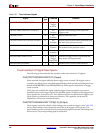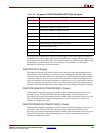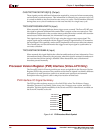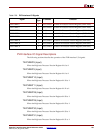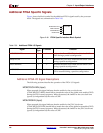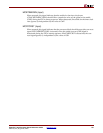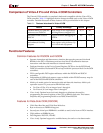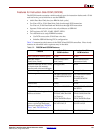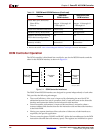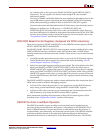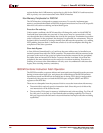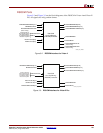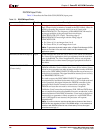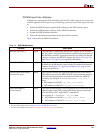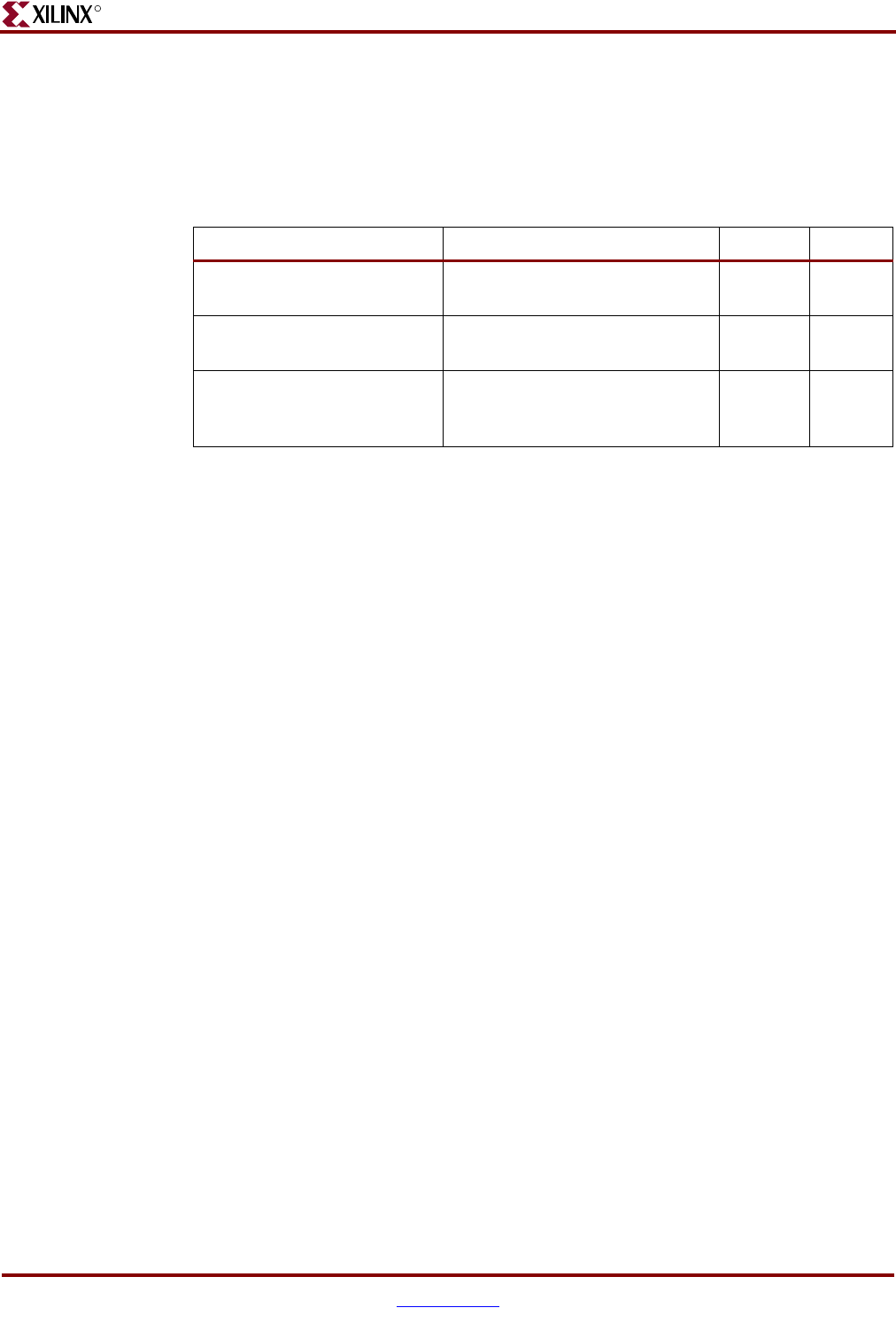
140 www.xilinx.com PowerPC™ 405 Processor Block Reference Guide
1-800-255-7778 UG018 (v2.0) August 20, 2004
Chapter 3: PowerPC 405 OCM Controller
R
Comparison of Virtex-II Pro and Virtex-4 OCM Controllers
The Virtex-4 OCM controller is completely backward compatible with the Virtex-II Pro
OCM controller. Table 3-1 highlights the new features available only on the Virtex-4 OCM
controller. Detailed discussion of these features will be provided later in this chapter.
Functional Features
Common Features for DSOCM and ISOCM
x Separate instruction and data memory interface between the processor block and
BRAMs in the FPGA. Eliminates processor local bus (PLB) arbitration between
instruction- and data-side interfaces to external memory.
x Dedicated interface to the Device Control Register (DCR) bus for the ISOCM and
DSOCM controllers. Dedicated DCR bus loop inside the processor block for the OCM
controllers.
x FPGA-configurable DCR register addresses within the DSOCM and ISOCM
controllers.
x Independent 16 MB logical memory space available within PPC405 memory map for
each of the DSOCM and ISOCM controllers.
x Multi-cycle mode option for instruction-side and data-side interfaces. Multi-cycle
operation uses an N:1 processor-to-BRAM clock ratio.
i For Virtex-II Pro, N is an integer from 1 through 4.
i For Virtex-4, N is an integer from 1 through 8.
x Virtex-4 only: Optional auto clock ratio detection to eliminate the need for
programming the control registers of the CPU-to-BRAM clock ratio. This feature
simplifies the programming model to use DSOCM and ISOCM.
Features for Data-Side OCM (DSOCM)
x 32-bit Data Read bus and 32-bit Data Write bus.
x Byte write access to DSBRAM support.
x Second port of dual port DSBRAM is available to read/write from an FPGA interface.
x 22-bit address to DSBRAM port.
x DCR Registers: DSCNTL, DSARC.
x Virtex-4 only: Optional support for variable latency for read or write data transfer.
Table 3-1: Features Introduced in Virtex-4 OCM
Feature Primary Advantage ISOCM DSOCM
Variable latency for read and
write access to DSOCM
Wide range of new applications
utilizing memory-mapped I/O
N/A Yes
DCR-based read access to
ISOCM.
Support software debugging for
ISOCM.
Yes N/A
Auto clock ratio detection
and enhanced clocking
support.
Eliminate the need to load wait
state register using software. Up
to 8:1 clock ratio supported.
Yes Yes



